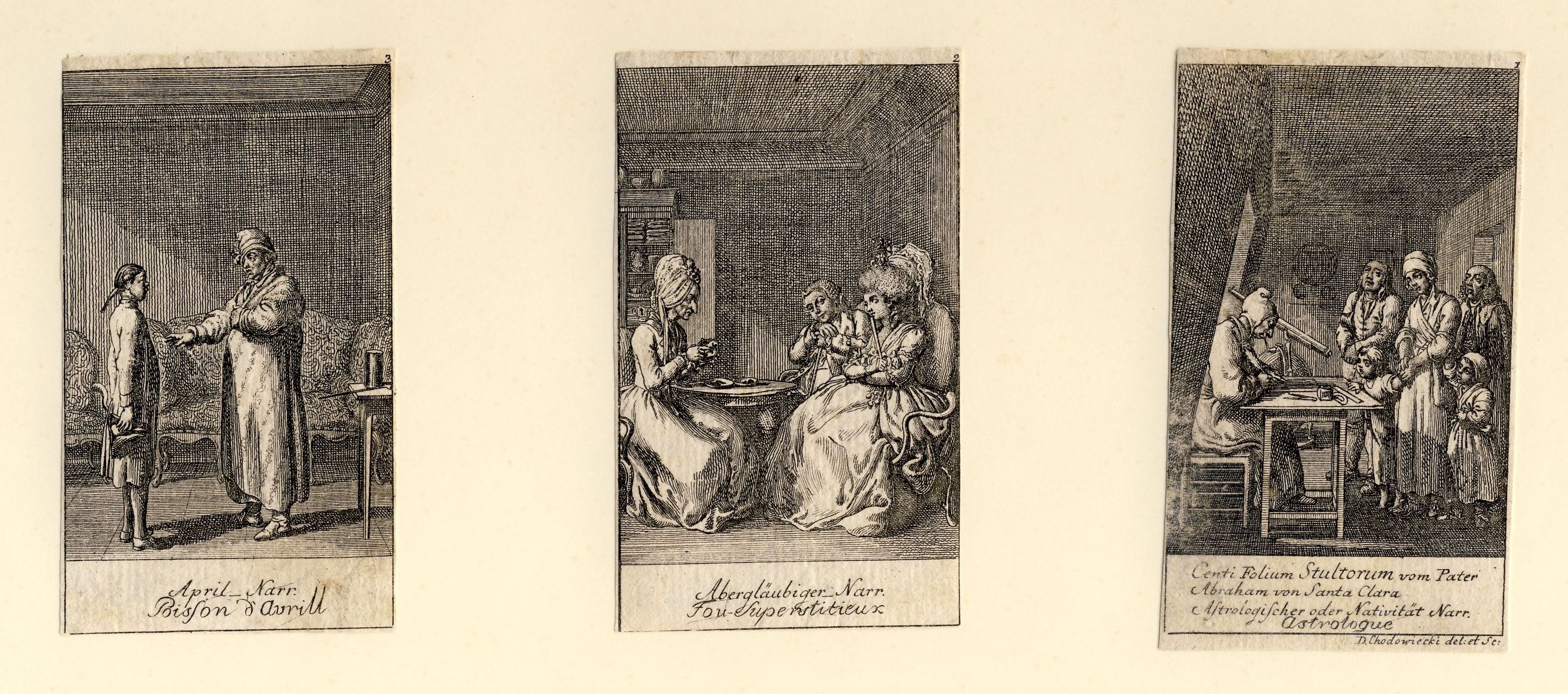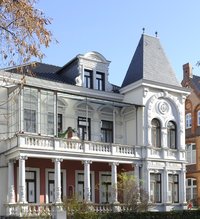Die drei kleinen Kupferstiche von Daniel Chodowiecki zeigen laut Untertitel:
1. April-Narr - Bisson d'Avrill
2. Abergläubiger-Narr - Fou Supenstitieux
3. Centi Folium Stultorum vom Pater Abraham von Santa Clara - Astrologischer oder Nativität-Narr Astrologue
Unter dem dritten Blatt steht rechts unten: D. Chotowieki del:et Sc:
Die drei auf eine Pappe aufgeklebten Kupferstiche aus der Zeit um 1770 stammen aus der Sammlung Paetow.
en

